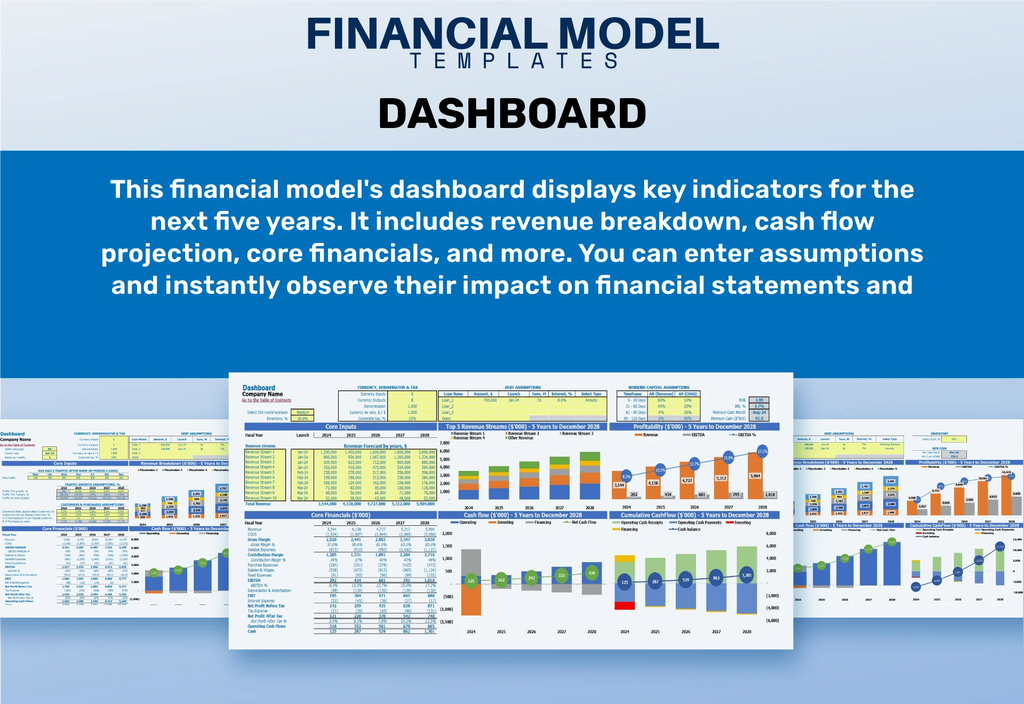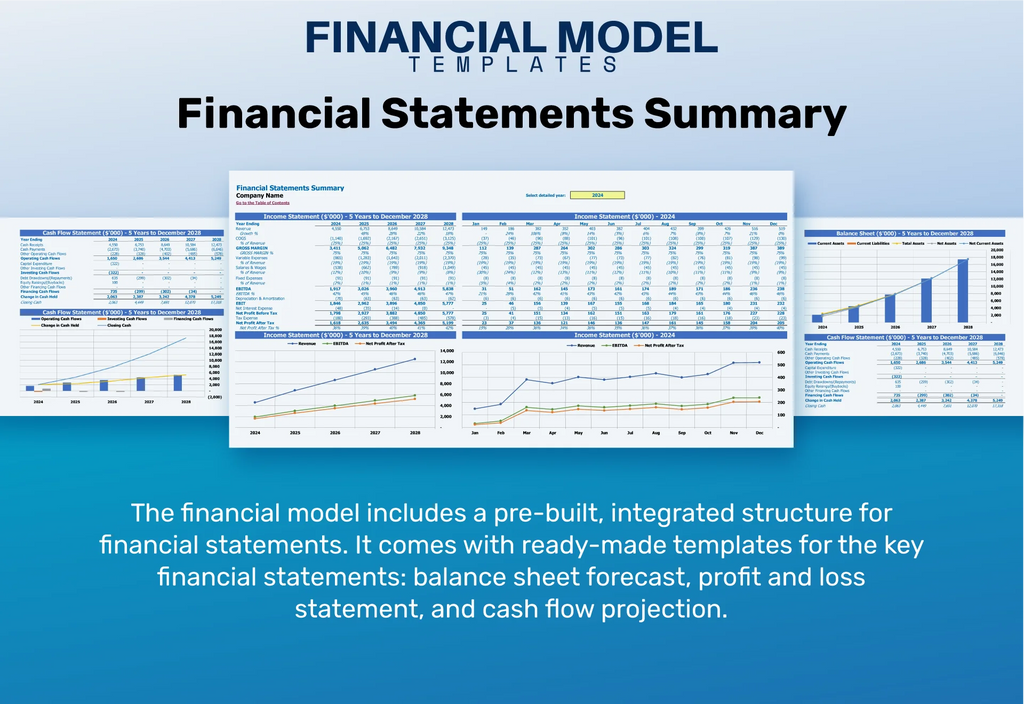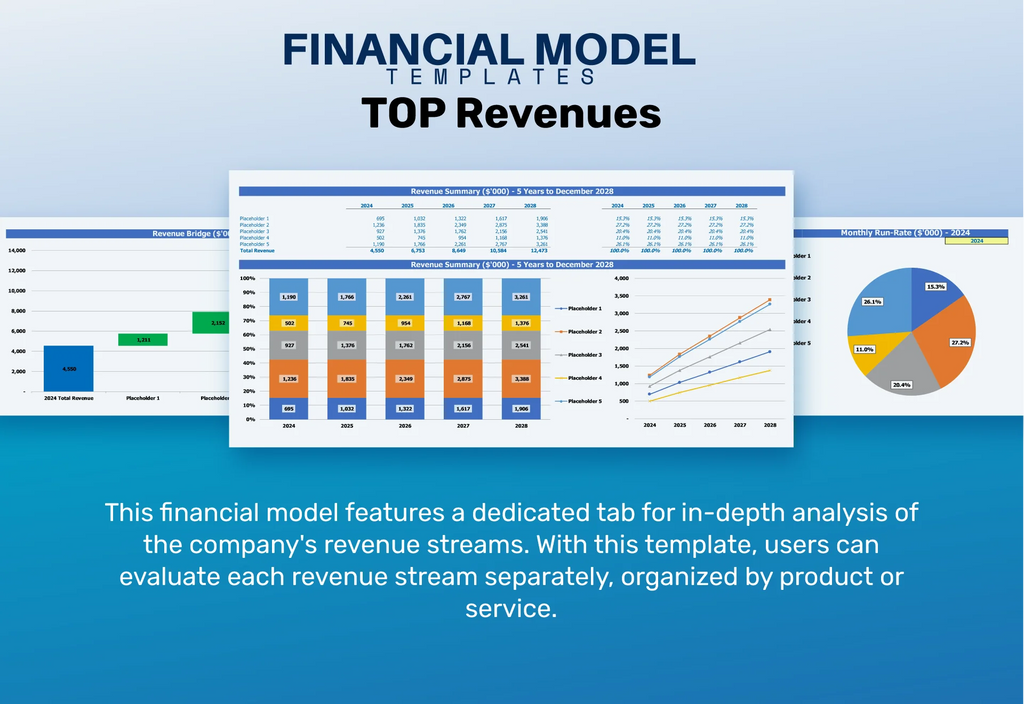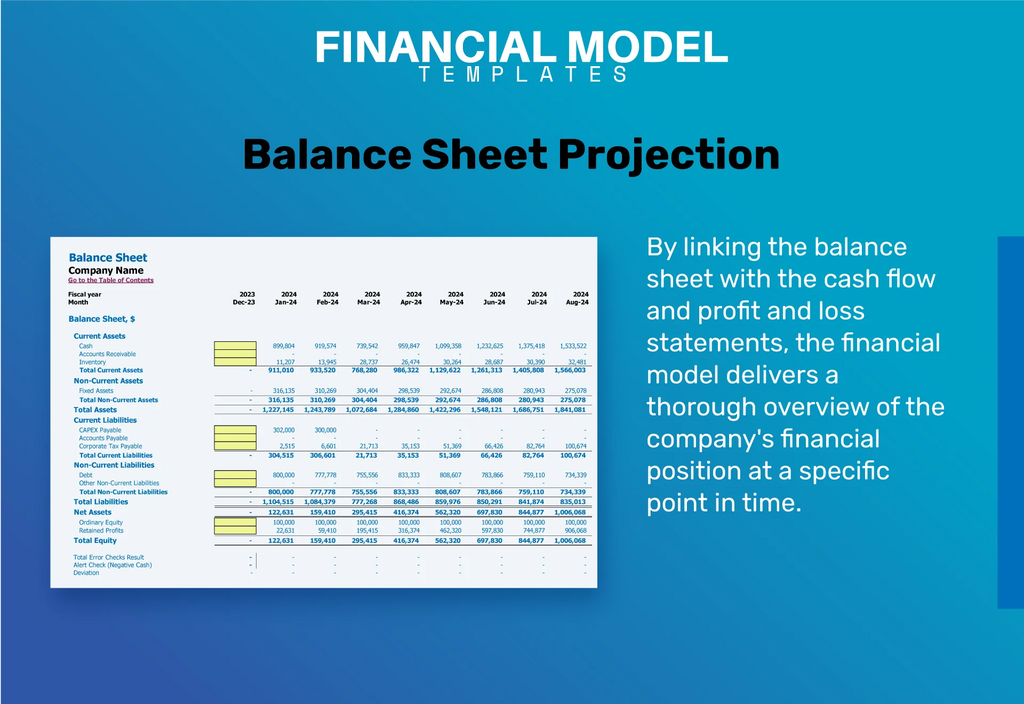Building Inspection Financial Model

- ✔ 5-Year Financial Projections
- ✔ 100% Editable
- ✔ Investor-Approved Valuation Models
- ✔ MAC/PC Compatible, Fully Unlocked
- ✔ No Accounting Or Financial Knowledge
Building Inspection Financial Model
Bundle Includes:
ALL IN ONE MEGA PACK - CONSIST OF:
building inspection Financial Model/Business Plan Excel Template
Pitch Deck Template For PowerPoint, Keynote & Google Slides
Business Plan Guide and Business Plan Template in MS Word Format
Financial Dashboard in Excel To Track Your Business Performance
BUILDING INSPECTION FINANCIAL MODEL FOR STARTUP INFO
Highlights
A sophisticated **5-year building inspection cost analysis** model is essential for businesses at any stage of development, providing a comprehensive framework for effective **real estate valuation** and insight into **property appraisal financials**. This model simplifies **construction risk assessment** while highlighting the **financial implications** outlined in the **inspection report**. With minimal prior **financial planning** experience required, even users with basic Excel knowledge can attain quick and reliable outcomes, ensuring that **capital expenditure forecasting** aligns with **building maintenance budgeting**. By leveraging this tool, stakeholders can conduct thorough **property investment analysis** and develop robust **asset management strategies** that address **compliance and regulatory costs** and optimize **facility management costs**. Additionally, implementing a **cost-benefit analysis of inspections** will guide effective **renovation financial planning** and refine **real estate cash flow analysis**, thereby enhancing decision-making and risk mitigation in property investments. Before committing to a building inspection business, consider utilizing a **building inspection feasibility study template excel** for tailored insights.
The building inspection Excel financial model provides significant pain relief for buyers by facilitating a comprehensive cost analysis for building inspections, enabling effective budgeting for building assessments and long-term building maintenance. This tool simplifies property appraisal financials, allowing for accurate real estate valuation models that predict cash flow through detailed renovation financial planning and capital expenditure forecasting. With its focus on compliance and regulatory costs, the model enhances risk mitigation in property investments by integrating construction risk assessments and market analysis for inspections. Buyers also benefit from automated updates of financial metrics, enabling rapid insights into asset management strategies, facility management costs, and inspection service pricing strategies, all while ensuring a thorough cost-benefit analysis of inspections that ultimately promotes informed investment decisions.
Description
The building inspection financial planning model is crucial for establishing your business, allowing you to conduct a comprehensive building inspection cost analysis and real estate valuation model. Our framework assists in property appraisal financials by evaluating the financial implications of inspection reports and identifying budgeting needs for building maintenance while forecasting capital expenditures. It supports property development financial models, enhancing asset management strategies and drilling down on facility management costs. Our plan incorporates compliance and regulatory costs to ensure your operations are within legal parameters, while also providing a cost-benefit analysis of inspections. With a focus on real estate cash flow analysis, you can implement effective risk mitigation in property investments, ensuring wise budgeting for building assessments and streamlining inspection service pricing strategies to optimize your financial metrics for building inspections.
BUILDING INSPECTION FINANCIAL MODEL REPORTS
All in One Place
Optimize your property investment decisions with our comprehensive building inspection feasibility study template in Excel. This robust model allows for seamless modifications, enabling you to conduct a thorough cost analysis, assess financial implications, and forecast capital expenditures. Leverage the inspection report to enhance your real estate valuation model and strengthen your renovation financial planning. By integrating budgeting for building assessments and risk mitigation strategies, you can ensure informed asset management and facility management costs. Elevate your real estate cash flow analysis and drive effective property development financial outcomes today.

Dashboard
An effective dashboard featuring critical financial indicators is essential for any startup pro forma template. Our dashboard consolidates data from your property appraisal financials and real estate valuation model, allowing users to explore key metrics related to building inspection cost analysis and compliance costs. By navigating through different time periods, users can conduct in-depth property investment analysis and risk mitigation in property investments. This facilitates strategic decision-making, optimizing asset management strategies and enhancing overall financial health. Ultimately, the dashboard empowers informed decisions for successful property development and effective building maintenance budgeting.

Business Financial Statements
Our financial statement template is designed to enhance your property investment analysis. It includes three key components: 1. **Income Statement**: Detail your income and expenditures, including depreciation and interest income, to assess overall performance. 2. **Balance Sheet**: Present a comprehensive view of assets, liabilities, and shareholders' equity, ensuring equilibrium in your financials. 3. **Cash Flow Statement**: Analyze cash inflows and outflows to determine operational viability and profitability. This template supports effective building inspection cost analysis and aids in construction risk assessment, ensuring sound financial planning for your property development projects.

Sources And Uses Statement
A comprehensive sources and uses table is essential for transparent tracking of capital allocation in real estate ventures. It provides clarity on the origin of raised funds and directs focus towards key expenditures, including building inspection costs, compliance and regulatory costs, and capital expenditure forecasting. This structured approach enhances property investment analysis, enabling stakeholders to assess the financial metrics for building inspections, optimize asset management strategies, and inform risk mitigation in property investments. Ultimately, such financial clarity supports effective budgeting for building assessments and strategic decision-making in facility management costs.

Break Even Point In Sales Dollars
Understanding the break-even point in financial planning requires a nuanced approach to revenue and sales analysis. Revenue represents total income from product sales, while profit is derived from this revenue after accounting for all fixed and variable expenses. In the context of real estate, integrating a robust property investment analysis, including building inspection cost analysis and compliance costs, enhances financial metrics for effective decision-making. This strategic insight aids in budgeting for building assessments and fosters informed renovation financial planning and risk mitigation in property investments, ultimately guiding sustainable asset management strategies.

Top Revenue
Utilize the Top Revenue tab to generate a comprehensive demand report for your building inspection services, enabling a detailed cost analysis and financial valuation of each scenario. This insights-driven approach facilitates effective renovation financial planning and helps identify optimal asset management strategies. In the startup financial projection template, analyze revenue depth and forecast demand fluctuations during weekdays and weekends. Such insights are invaluable for budgeting facility management costs and ensuring compliance with regulatory requirements, ultimately enhancing your property investment analysis and risk mitigation strategies. Optimize resource allocation for improved financial outcomes.

Business Top Expenses Spreadsheet
The Top Revenue tab in the startup costs spreadsheet provides a comprehensive overview of financial metrics for building inspections. This organized layout presents a summarized annual breakdown of your revenue streams, highlighting key elements such as revenue depth and revenue bridge. By integrating insights on property appraisal financials and market analysis for inspections, this tool is essential for effective real estate valuation modeling and strategic budgeting for building assessments, ultimately enhancing your asset management strategies and strengthening financial planning.

BUILDING INSPECTION FINANCIAL PROJECTION EXPENSES
Costs
Startup costs are crucial to any financial model, particularly in real estate investment analysis. These expenses arise before project initiation, requiring vigilant monitoring to prevent significant financial losses. Utilizing a tailored startup pro forma allows for detailed capital expenditure forecasting and budgeting for building assessments. This structured approach enhances property appraisal financials, ensuring that spending and funding levels are aligned. By implementing effective asset management strategies and conducting thorough market analysis for inspections, startups can improve their financial metrics, mitigate risks, and optimize returns on property investments.

CAPEX Spending
A comprehensive capital expenditure plan is crucial for effective financial forecasting in property development financial models. It enables financial analysts to accurately assess start-up costs and track investments, which are essential for enhancing the company's financial performance. By incorporating capital expenditures into cash flow statements, organizations can optimize their budgeting strategies. Furthermore, this foresight aids in risk mitigation within property investments, ultimately supporting sound asset management strategies and ensuring compliance with regulatory standards. Engaging in thorough financial metrics for building inspections enhances the overall property investment analysis and drives informed decision-making.

Loan Financing Calculator
The loan amortization schedule within this startup financial model Excel template provides a comprehensive overview of loan repayment dynamics. It details periodic payments, encompassing both principal and interest components, essential for accurate property investment analysis. By projecting financial metrics, this tool aids in effective budgeting for building assessments and capital expenditure forecasting, ensuring stakeholders understand compliance and regulatory costs. Ultimately, this model serves as a critical asset management strategy, facilitating informed decision-making in construction risk assessment and renovation financial planning, aiming for optimal cash flow and robust financial health throughout the loan term.

BUILDING INSPECTION EXCEL FINANCIAL MODEL METRICS
Financial KPIs
The return on equity (ROE) financial metric is essential for effective property investment analysis, as it measures profitability relative to shareholders' equity. To calculate ROE, utilize data from your pro forma balance sheet and monthly profit and loss statements. By dividing net income by the average shareholders' equity, you gain valuable insights into your asset management strategies. This analysis not only aids in construction risk assessment but also supports renovation financial planning and budgeting for building assessments, ensuring informed decision-making in real estate investment and capital expenditure forecasting.

Cash Flow Forecast Excel
The cash flow chart template visually represents the inflows and outflows of a business’s finances. Cash inflows indicate revenue, while outflows reflect expenditures. This cash flow forecasting tool serves as a vital financial statement, detailing how cash is generated and utilized over a specific accounting period. Utilizing this data is essential for effective real estate valuation models and property investment analysis, as it helps assess an organization's operational viability, facilitating informed decisions in areas like building maintenance budgeting and compliance costs. Ultimately, it enhances risk mitigation strategies in property investments and capital expenditure forecasting.

KPI Benchmarks
A financial plan startup benchmark tab strategically calculates key performance indicators and compares them against industry averages. This benchmarking process is critical for financial modeling, particularly for startups. By analyzing established companies in the real estate sector, startups can adopt best practices in property investment analysis, capital expenditure forecasting, and risk mitigation. Insights gained from market analysis for inspections and building inspection cost analysis enhance decision-making, driving better financial outcomes. This approach not only aids in budgeting for building assessments but also strengthens asset management strategies for sustainable growth.

P&L Statement Excel
A forecasted profit and loss statement serves as a crucial financial tool, summarizing key income and expense streams. This P&L Excel template provides insights into net income or loss over a designated reporting period, aiding in property investment analysis. By integrating building maintenance budgeting and capital expenditure forecasting, stakeholders can evaluate the financial implications of building inspection costs. Moreover, it assists in risk mitigation in property investments and supports informed decision-making in asset management strategies, ultimately enhancing compliance and regulatory cost assessments for more sustainable financial outcomes.

Pro Forma Balance Sheet Template Excel
The comprehensive financial forecast template integrates seamlessly with cash flow projections, profit and loss statements, and other critical inputs, offering a holistic view of your asset management strategies. By incorporating building inspection cost analysis and property appraisal financials, this model empowers users to evaluate compliance and regulatory costs while anticipating future capital expenditures. Use it to enhance your property investment analysis and inform budgeting for building assessments, ensuring robust risk mitigation in your property investments. This financial modeling tool is essential for informed decision-making in real estate valuation and facility management.

BUILDING INSPECTION FINANCIAL PROJECTION TEMPLATE VALUATION
Startup Valuation Model
The seed valuation spreadsheet offers essential tools for real estate valuation, including Weighted Average Cost of Capital (WACC), Discounted Cash Flows (DCF), and Free Cash Flows (FCF). WACC serves as a critical construction risk assessment tool, guiding banks in evaluating a company's ability to generate capital from both debt and equity before loan approval. Meanwhile, the DCF calculation highlights future cash flow value, integral to property investment analysis and facilitating informed renovation financial planning. Together, these metrics support sound decision-making in building appraisal financials and budgeting for effective asset management strategies.

Cap Table
A comprehensive cap table serves as a vital tool for various financial analyses, including building inspection cost analysis and real estate valuation models. It efficiently tracks investments and shareholder equity while providing insights into financial metrics for building inspections. By utilizing this resource, stakeholders can effectively forecast capital expenditures, assess construction risks, and evaluate property appraisal financials. It also aids in budgeting for building assessments and informs asset management strategies, ultimately enhancing property investment analysis and renovation financial planning. Leverage data from a cap table to navigate compliance, regulatory costs, and optimize financial performance in property development.

KEY FEATURES
A robust real estate valuation model streamlines property appraisal financials, saving time and money through accurate cost analysis.
Our financial model simplifies building inspection cost analysis, empowering you to make informed decisions without costly consultant fees.
Our financial model enhances property investment analysis by providing clear insights on inspection report financial implications and risk mitigation strategies.
Utilizing a robust real estate valuation model streamlines property investment analysis, ensuring accurate budgeting and risk mitigation strategies.
A robust real estate valuation model enhances financial metrics for building inspections, optimizing investment decisions and maximizing asset growth potential.
Utilizing a robust property development financial model enables informed decision-making for optimizing cash flow and strategic investment planning.
A robust financial model enhances property investment analysis by accurately forecasting costs and risks over a five-year horizon.
This financial model enhances decision-making by providing detailed insights into projected cash flows and property investment analysis over five years.
A comprehensive real estate valuation model identifies potential cash balance shortfalls, enabling proactive budgeting and risk mitigation for property investments.
The real estate valuation model serves as an essential tool for proactive risk mitigation in property investments and financial planning.
ADVANTAGES
Leverage a robust real estate valuation model to enhance budgeting for building assessments and optimize inspection cost analysis.
Enhance property investment analysis by utilizing a financial model that mitigates risks and optimizes building inspection costs.
A comprehensive financial model enhances investment decisions by facilitating accurate property appraisal and optimizing building inspection cost analysis.
A robust financial model enhances property investment analysis by providing clear insights into building inspection cash inflows and outflows.
The financial model enhances budgeting for building assessments, ensuring timely payments and effective risk mitigation in property investments.




